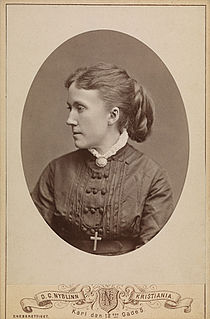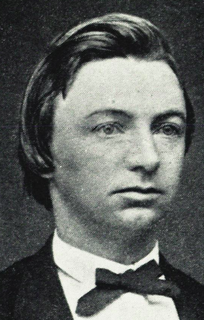Erik Røring Møinichen Lie (23 November 1869 – 1943) was a Norwegian writer.
He was born in Kristiania as the youngest son [1] of the cousins, writer Jonas Lie (1833–1908) and Thomasine Henriette Lie (1833–1907). He was a brother of Michael Strøm Lie and writer Mons Lie. On the maternal side he was a nephew of Erika (Nissen) and Ida Lie, and a first cousin of Erika Lie, Karl Nissen, painter Jonas Lie [2] and Eyolf Soot and a first cousin once removed of Botten Soot. [3] On the paternal side he was a first cousin of Bernt Lie and Vilhelm Lie, and a first cousin once removed of Emil Lie and Nils Lie. [2] Together with Kathrine Elisabeth Dons (1876–1947) he was the father of writer, police officer and Nazi politician Jonas Lie. Through his wife Erik Lie was also an uncle of Helge Thiis and Ragna Thiis Stang. [4]

Oslo is the capital and most populous city of Norway. It constitutes both a county and a municipality. Founded in the year 1040 as Ánslo, and established as a kaupstad or trading place in 1048 by Harald Hardrada, the city was elevated to a bishopric in 1070 and a capital under Haakon V of Norway around 1300. Personal unions with Denmark from 1397 to 1523 and again from 1536 to 1814 reduced its influence, and with Sweden from 1814 to 1905 it functioned as a co-official capital. After being destroyed by a fire in 1624, during the reign of King Christian IV, a new city was built closer to Akershus Fortress and named Christiania in the king's honour. It was established as a municipality (formannskapsdistrikt) on 1 January 1838. The city's name was spelled Kristiania between 1877 and 1897 by state and municipal authorities. In 1925 the city was renamed Oslo.

Jonas Lauritz Idemil Lie was a Norwegian novelist, poet, and playwright who, together with Henrik Ibsen, Bjørnstjerne Bjørnson and Alexander Kielland, is considered to have been one of the Four Greats of 19th century Norwegian literature.
Michael Strøm Lie was a Norwegian diplomat.
Erik Lie wrote both fiction: Tolv procent (1902), Direktør Lyngs hjem (1903) and Den nye lykke (1911); and non-fiction. He wrote literary historic books such as Honoré de Balzac (1893) and Den europæiske litteratur i kulturhistoriske billeder (1896), and the more biographical Jonas Lie; oplevelser (1908), Arne Garborg (1914) and Erindringer fra et dikterhjem (1928). He has been credited with taking the initiative to found the Norwegian Authors' Union in 1893. From 1901 to 1905 he was a librarian at the Bibliothèque Nordique in Paris, [1] a part of the Bibliothèque Sainte-Geneviève.

The Norwegian Authors' Union is an association of Norwegian authors. It was established in 1893 to promote Norwegian literature and protect Norwegian authors' professional and economic interests. DnF also works in solidarity with persecuted writers internationally.

Paris is the capital and most populous city of France, with an area of 105 square kilometres and an official estimated population of 2,140,526 residents as of 1 January 2019. Since the 17th century, Paris has been one of Europe's major centres of finance, commerce, fashion, science, and the arts.









